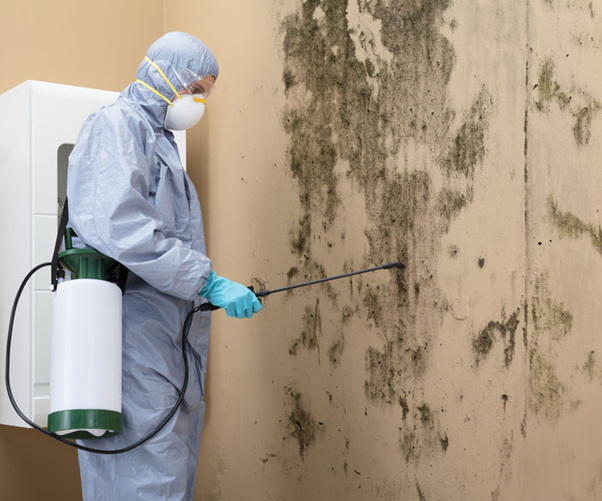Poor indoor air quality, high humidity, and water damage are the leading causes of mold infestation in a building. A 1984 study by the World Health Organisation (WHO) found that over 30% of commercial buildings have bad indoor air quality. Thus, the same structures are at a high risk of mold infestation.
Why Is This A Significant Concern?
The reason being, mold can grow anywhere, on any organic surface, as long as there are moisture and oxygen. It can grow on the walls, under the paint, insulation, and furnishings, and anywhere the water or moisture gets collected. Here are some of the major issues that mold growth can cause in a commercial building.
1) Stains and Discoloration on Walls
The most noticeable effect of mold growth is stains or discoloration on the walls. This is not just limited to the shine of the colour. Mold can cause flaking or peeling of the paint, or it can cause bubbles. In severe cases, mold can grow on the surface of the paint, which not only looks horrible but can pose a significant health risk (as mentioned below).
2) Structural Damage
Mold growth is not just on the surface; in fact, it can often grow within the walls and insulations. This can lead to severe structural damage to the building. It can lead to rotten insulation, and if not fixed on time, it can make the walls weak, leading to major, expensive issues. In severe cases, you may have to rebuild the wall to avoid the collapse of the same.
3) Musty Smell
Mold can affect the air quality of the building as well. It can cause a strong, musty smell within the building that is difficult to get rid of. The scent can also be described as that of wet socks of rotten wood. In normal cases, the pungent smell can make it uncomfortable for the employees to work, and in worst cases, it can lead to headaches, nasal irritation, fatigue, and even nausea.
4) Health Risks
The biggest problem of mold growth in a commercial building is that it can pose a severe health risk for the employees. The problems start off as minor health conditions like stuffy nose, wheezing, red or itchy skin and eyes, and lethargy. But, if it is not addressed immediately, it can cause severe health conditions such as upper respiratory tract syndrome, memory loss, lethargy, etc. Asthma risk also increases by 30-50% due to mold infestation in a building.
It is vital to contact a professional mold damage restoration service provider immediately. Prompt action to mitigate mold growth can save you thousands of dollars in damages and protect your employees’ health. Contact Nationwide Restorations now.

